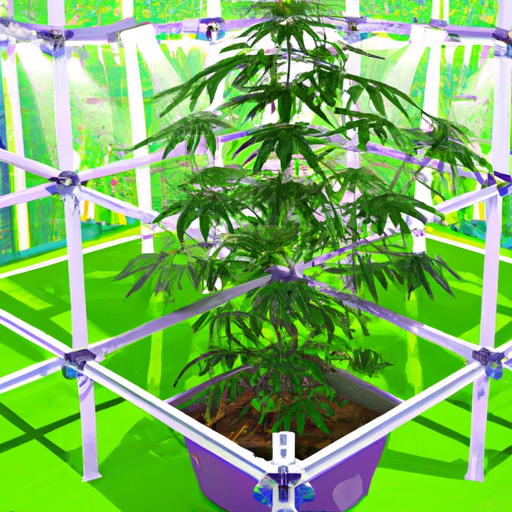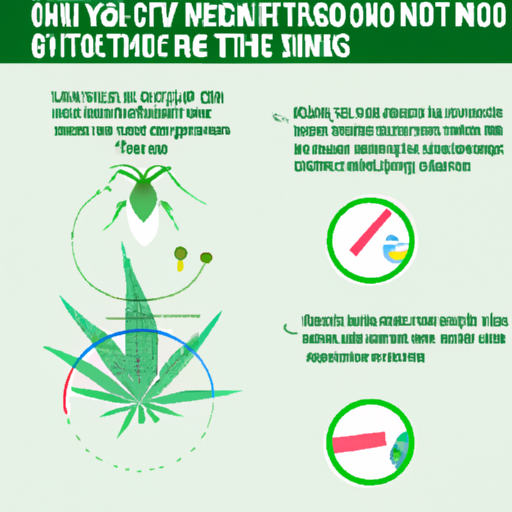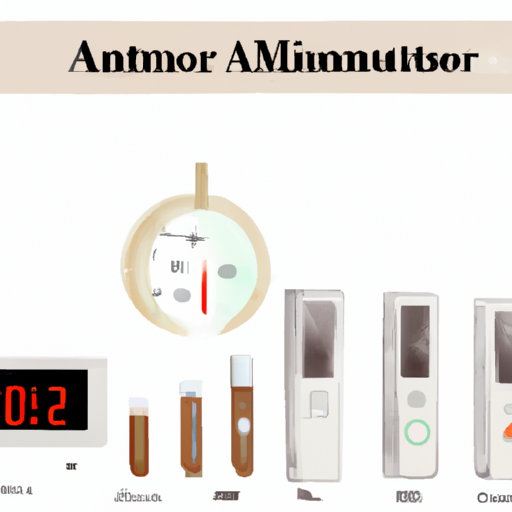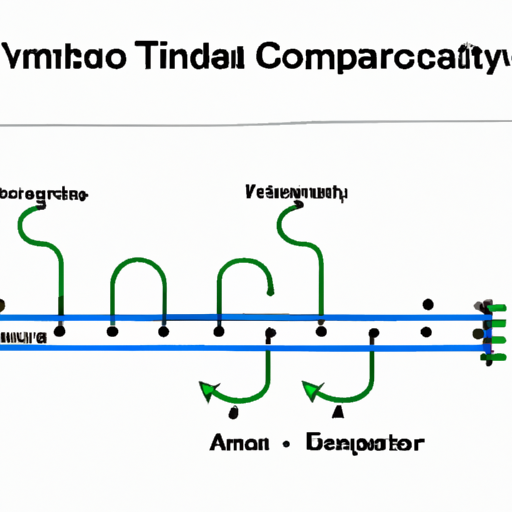This professional guide focuses on the critical aspects of indoor cannabis flowering: humidity and temperature control. Equipping cultivators with in-depth knowledge, it explains how to optimize environmental conditions for the highest yield and quality. The guide includes cannabis flowering humidity control and temperature tips to facilitate a successful and bountiful harvest.
Understanding the Importance of Humidity and Temperature Control: Why It Matters?
Maintaining proper humidity and temperature levels during the flowering stage of cannabis is crucial for achieving successful yields and optimal plant health. Controlling humidity helps prevent the growth of mold, mildew, and other harmful pathogens that thrive in damp environments. High humidity levels can lead to bud rot, which can devastate an entire crop. On the other hand, low humidity can cause plants to become stressed, leading to stunted growth and reduced resin production.
Temperature control is equally important during the flowering stage. Cannabis plants have specific temperature requirements for optimal growth and resin production. High temperatures can cause the buds to become loose and airy, resulting in lower potency and reduced yields. Additionally, excessive heat can stress the plants and make them more susceptible to pests and diseases. Conversely, low temperatures can slow down the metabolism of the plants, leading to decreased nutrient uptake and slower growth.
Maintaining the right balance between humidity and temperature is essential for maximizing the quality and quantity of your cannabis flowers. When humidity and temperature are properly controlled, the plants can focus their energy on producing dense, resinous buds with potent cannabinoid and terpene profiles. By providing the ideal environment, you can ensure that your plants reach their full genetic potential, resulting in a higher-quality end product.
In addition to the direct impact on plant health and yield, proper humidity and temperature control also plays a role in preventing odors and ensuring the safety and security of your indoor cannabis operation. Excessive humidity and temperature fluctuations can create an environment that attracts pests and raises suspicion among neighbors or authorities. By closely monitoring and controlling these factors, you can minimize the risk of unwanted attention and maintain a professional and discreet operation.

A graphic showing a thriving cannabis plant in a controlled indoor environment.
Basic Guidelines: How to Control Humidity During Cannabis Flowering?
Controlling humidity during cannabis flowering requires implementing a few basic guidelines. First and foremost, it is essential to invest in a reliable hygrometer to accurately measure the humidity levels in your grow space. Aim for a relative humidity (RH) range of 40-50% during the early stages of flowering and gradually decrease it to 30-40% as the plants approach harvest.
To achieve the desired humidity levels, proper ventilation is key. Ensure that your grow space has adequate airflow by using fans to circulate the air. This helps prevent stagnant air pockets and promotes healthy transpiration, which can help control humidity. Additionally, consider using an exhaust fan to remove excess moisture from the room.
Another effective method to control humidity is by using dehumidifiers. These devices extract moisture from the air, helping to maintain optimal humidity levels. Depending on the size of your grow space and the desired humidity range, you may need to use multiple dehumidifiers. It is important to regularly monitor and adjust the dehumidifiers to maintain the desired humidity levels.
In addition to mechanical methods, managing the watering practices can also help control humidity. Avoid overwatering as it can lead to excessive humidity levels in the grow space. Ensure that the plants receive adequate water, but allow the growing medium to dry out slightly between waterings to prevent excessive moisture buildup.
Finally, it is crucial to regularly inspect the plants for any signs of mold or mildew. Even with proper humidity control, it is still possible for these issues to arise. If any signs of mold or mildew are detected, take immediate action to remove and control the affected areas to prevent further spread and damage to the crop.
"The hotter, the better" – Debunking the Myth Around Cannabis Flowering
One common misconception in cannabis cultivation is the belief that higher temperatures lead to better flowering results. However, this myth needs to be debunked to ensure optimal growth and yield.
- 1. Understanding the Ideal Temperature Range:
While it is true that cannabis plants thrive in warmer temperatures during the vegetative stage, it is important to maintain a specific temperature range during flowering. The ideal temperature range for cannabis flowering is typically between 70-85°F (21-29°C). Going beyond this range can have detrimental effects on the plants' overall health and productivity.2. The Impact of High Temperatures on Flowering:
Excessive heat can cause a range of problems during cannabis flowering. Firstly, it can lead to increased transpiration, causing the plants to lose more water than necessary. This can result in wilting, nutrient deficiencies, and overall stress. Secondly, high temperatures can disrupt the plants' metabolic processes, affecting the uptake and utilization of essential nutrients. Finally, intense heat can also lead to the production of ethylene, a plant hormone that can negatively impact flower development and quality. - 3. Maintaining a Balanced Environment:
To ensure optimal flowering, it is crucial to maintain a balanced environment by controlling the temperature within the recommended range. This can be achieved through various methods such as using air conditioning, ventilation, and temperature control devices. By keeping the temperature within the ideal range, you are providing the plants with the optimal conditions to develop healthy flowers and maximize their potential yield.

An infographic debunking common myths about temperature control during cannabis flowering.
Cannabis Flowering Temperature Tips: Achieving the Right Balance
Achieving the right balance of temperature during cannabis flowering requires careful monitoring and adjustments. Here are some tips to help you maintain the optimal temperature range for your plants:
- 1. Proper Ventilation and Air Circulation:
Adequate airflow is essential to regulate the temperature in your grow space. Use fans and ventilation systems to ensure good air circulation, preventing hot spots and maintaining a consistent temperature throughout the canopy. This will help prevent heat buildup and create an environment where the plants can thrive. - 2. Consider Nighttime Temperature Drops:
During the flowering stage, it is beneficial to provide a slight drop in temperature during the nighttime hours. This temperature differential mimics natural outdoor conditions and can enhance resin production and flower development. Aim for a difference of around 10°F (5-6°C) between daytime and nighttime temperatures. - 3. Insulate Your Grow Space:
Insulating your grow space can help maintain a stable temperature. Use materials such as reflective insulation or foam boards to prevent heat loss or gain. Additionally, sealing any air leaks will help maintain a consistent environment and prevent temperature fluctuations. - 4. Monitor Temperature Levels:
Regularly monitor the temperature in your grow space using a thermometer or a climate controller. Ensure that the temperature stays within the recommended range throughout the flowering period. If the temperature goes above or below the desired range, make necessary adjustments to correct it promptly. - 5. Consider Using Temperature Control Devices:
Advanced growers may opt to use temperature control devices such as air conditioners or heaters to maintain a precise temperature range. These devices can be programmed to automatically adjust the temperature based on preset parameters, providing more precise control over the growing environment.
Investing in the Right Tools: How to Monitor and Adjust Humidity and Temperature?
Monitoring and adjusting humidity and temperature levels in your indoor cannabis flowering space requires the use of appropriate tools. Here are some essential tools and techniques to help you maintain precise control over these environmental factors:
- 1. Hygrometer:
A hygrometer is a device used to measure humidity levels in the air. Invest in a reliable hygrometer that provides accurate readings. Place it at canopy height, as this is where the plants will be most affected by humidity levels. Regularly monitor the humidity and adjust it as needed to maintain the optimal range for flowering cannabis. - 2. Thermometer:
Similar to a hygrometer, a thermometer is necessary to measure the temperature in your grow space. Choose a thermometer that can be easily read and placed at canopy level. Monitor the temperature regularly and make necessary adjustments to keep it within the recommended range. - 3. Dehumidifier:
If the humidity levels in your grow space are too high, investing in a dehumidifier can help reduce excess moisture in the air. Dehumidifiers work by extracting moisture from the environment, creating a more suitable humidity level for cannabis plants. Choose a dehumidifier that is appropriate for the size of your grow space. - 4. Humidifier:
On the other hand, if the humidity is too low, a humidifier can be used to increase moisture levels. Humidifiers release water vapor into the air, raising the humidity to the desired range. Opt for a humidifier that can be easily controlled and adjusted based on your specific needs. - 5. Climate Controller:
For more advanced control over humidity and temperature, consider investing in a climate controller. These devices allow you to program and automate adjustments based on preset parameters. Climate controllers can integrate multiple tools like heaters, air conditioners, humidifiers, and dehumidifiers, allowing for precise regulation of the growing environment.

An image of various tools like humidity controllers and thermometers used for monitoring indoor conditions.
Dealing with Fluctuations: What to Do When Humidity and Temperature Go Away?
Maintaining consistent humidity and temperature levels throughout the flowering phase of cannabis can sometimes be challenging. However, there are steps you can take to address fluctuations and ensure the optimal growing conditions for your plants.
When you notice that humidity or temperature has gone astray, the first step is to identify the cause of the fluctuation. Is it due to external factors such as changes in weather or improper ventilation? Or is it an issue with your equipment?
If the fluctuation is caused by external factors, such as a sudden increase in humidity due to rainy weather, you may need to adjust your ventilation system. Increase the airflow by using fans or adjusting the intake and exhaust vents. This will help circulate the air and prevent excess humidity from building up.
On the other hand, if the fluctuation is caused by faulty equipment, such as a malfunctioning dehumidifier or air conditioner, it is crucial to address the issue promptly. Repair or replace any defective equipment to ensure that it functions properly and maintains the desired humidity and temperature levels.
Additionally, you can employ some temporary measures to mitigate the impact of fluctuations. For example, if the temperature rises unexpectedly, you can use cooling techniques such as evaporative cooling or misting to bring the temperature down. Similarly, if the humidity drops too low, you can use techniques like misting or placing water trays to increase moisture in the air.
Regularly monitoring the humidity and temperature levels is crucial during the flowering phase. Make it a habit to check the readings multiple times a day to catch any fluctuations early on. By staying vigilant and taking prompt action, you can minimize the negative impact of fluctuations and maintain a stable environment for your cannabis plants.
Advanced Techniques: How Can You Further Optimize Your Humidity and Temperature Control?
To further optimize your humidity and temperature control during indoor cannabis flowering, there are several advanced techniques you can implement. These techniques go beyond the basic guidelines and can help you create an ideal environment for your plants.
One technique is the use of a humidistat and a thermostat. A humidistat allows you to set a specific humidity level, and it will automatically turn on or off your humidifier or dehumidifier to maintain that set level. Similarly, a thermostat enables you to set a desired temperature, and it will control your heating or cooling system accordingly. These devices provide precise control over humidity and temperature, ensuring a stable and consistent environment for your plants.
Another advanced technique is the use of a closed-loop system. This involves sealing off your grow space to create a controlled environment. By using an air-conditioning system with a built-in dehumidifier and a humidifier, you can maintain the perfect balance of humidity and temperature. This closed-loop system allows for more precise control and minimizes the impact of external factors on your growing conditions.
Additionally, you can incorporate the use of environmental controllers. These controllers can be programmed to monitor and adjust humidity, temperature, and even CO2 levels. They offer advanced automation and customization options, allowing you to create specific climate profiles for different stages of cannabis flowering.
Implementing these advanced techniques requires investing in specialized equipment and systems. However, they can greatly enhance your ability to control humidity and temperature, resulting in improved plant health, growth, and yield.

A diagram illustrating advanced techniques for optimizing humidity and temperature control.
Humidity and Temperature Control Tips:
| Tip | Temperature | Ventilation | Lighting |
|---|---|---|---|
| Humidity should be kept between 40-60% | Temperature should be kept between 21-26°C (70-80°F) | Ventilation should be provided to ensure air circulation | Lighting should be kept at 12-18 hours per day |
| Humidity should not drop below 40% | Temperature should not exceed 26°C (80°F) | Ventilation should be adjusted as needed | Lighting should be kept consistent |
| Humidity should not exceed 60% | Temperature should not drop below 21°C (70°F) | Ventilation should be provided with fans and air conditioning | Lighting should be adjusted to meet the needs of the plant |
| Humidity can be increased with a humidifier | Temperature can be controlled with air conditioning or heating | Ventilation can be increased with fans or air vents | Lighting can be adjusted using timers or light-dimming devices |
Controlling humidity and temperature during cannabis flowering is an art that leads to enhanced yield and quality. By implementing the tips provided in this guide, cultivators can create an ideal indoor environment that promotes robust flowering. Keep in mind that each strain may require individual adjustments to thrive. Continue learning, experimenting, and refining your control strategies to reap the maximum benefits.




